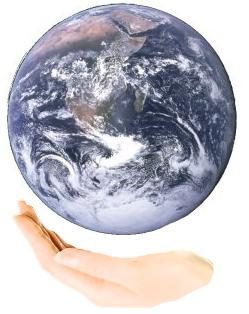Grand Duke Henri of Luxembourg
This law was abrogated in 1950, but Henri had already been allowed to enter France by special favour of President Vincent Auriol in 1948.
On October 31 of that same year Henri married Micaela Cousiño Quiñones de León (born April 30, 1938), daughter of Luis Cousiño Sebire and his wife Doña Antonia Maria Quiñones de Léon y Bañuelos, 4th Marchioness of San Carlos.
Henri is also a painter and has launched his own brand of perfume.
Robert Henri was 18 years of age when he left Cozad.
Robert Henri was born Robert Henry Cozad to Theresa Gatewood and John Jackson Cozad in Cincinnatti, OH.
By 1894, Henri was once again in Paris, where he earned a living as a private art instructor.
In 1902, Henri accepted a position at the New York School of Art (formerly known as the Chase School of Art, after artist William Merritt Chase.
1929 In spring, Henri is chosen as one of the top three living American artists by the Arts Council of New York.
Henri was the posthumous son of Charles Ferdinand, duc de Berry, younger son of King Charles X of France, by his wife, Princess Caroline Ferdinande Louise of the Two Sicilies, daughter of Francis I of the Two Sicilies.
As the grandson of the king, Henri was a Petit-Fils de France.
this enabled the supporters of the duc d'Orléans to later claim that Henri was not in fact a French prince.
At birth, Henri was given the title of duc de Bordeaux.
Henri was immediately proclaimed Henri V, King of France and Navarre.
Henri was then pretender for both legitimists and Orléanists and the restoration of Monarchy in France seemed to be a close possibility.
Following in the footsteps of novelists such as Nathaniel Hawthorne and Herman Melville, and the essayist Henry David Thoreau, who celebrated what they called "an American spirit," Henri turned his artistic vision to native themes.
Henri was born Robert Henry Cozad on June 25, 1865 in Nebraska.
While in Paris the radical Henri found Post-Impressionism, the European challenge to academic art, uninteresting.
Henri found their perspective refreshingly honest.
Returned to ParisIn 1898 Henri married and went to Paris for his honeymoon.
Henri took a job as an instructor at the New York School of Art, or the Chase School.
Henri was furious and quickly withdrew his canvases from the show.
Is it fine art," one critic asked, "to exhibit our sores?" Henri was singled out for his "streak of coarseness.
Robert Henri was born Robert Henry Cozad in Cincinnati, Ohio to Theresa Gatewood Cozad of Malden, Virginia and John Jackson Cozad, a gambler and real estate developer.
Henri had a brother, Johnny, and was a distant cousin of the noted American painter Mary Cassatt.
By 1895, Henri had come to reconsider Impressionism, calling it a "new academicism.
In the spring of 1929 Henri was chosen as one of the top three living American artists by the Arts Council of New York.
At the same time Henri was moved by the novels of Balzac, Emile Zola, and Leo Tolstoy, with their charged descriptions of the lives of the working class and their cries for social justice.
Henri was equally impressed by Manet's paintings, which he admired for their stunning characterizations of contemporary themes, forceful figures, and assured technique.
Henri described all of these artists as noble individuals whose sensibilities and responses to their subjects were evident in each stroke of the brush.
Henri was born at the Chateau of Pau, on the 14th of December 1553.
of Scots, on the 24th of April, 1558.
mother Jeanne was a staunch Protestant and Henri was also brought up as one.
winds of 50 kt in the eastern Gulf of Mexico.
By the winter, Henri was involved in discussions on impressionism and later he made "essays" in painting directly from nature in the Forest of Fontainebleau.
Henri was exposed to impressionism, *neo-impressionism, and Symbolism, movements and styles that were all thriving in the early 1890s.
Henri had already realized that an artist must follow his or her own temperament: to be "free and follow only what nature dictates to his peculiar sensibilities" (Henri, letter, 27 April 1891.
We know that at this time (spring 1891), Henri expressed admiration for *Monets series of haystacks (Homer, 1969, p.
Henri took part in the student exhibition of 1892, where he was categorized as an impressionist, still a controversial stylistic label in Philadelphia.
Even in the early 1890s, Henri was not a true impressionist.
With more teaching responsibilities, Henri found less time to paint, so he returned to Concarneau in the summer of 1894.
But by this time, Henri had a group of followers who met in his studio to discuss art, literature, music, cultural history, or whatever stimulating intellectual topic came up.
When Henri said "we value art not because of the skilled product, but because of its revelation of a lifes experience," he was rejecting the more finished impressionist canvas, which was to him, a piece of virtuoso technique a bright cheerful view of modern life, which usually lacked, however, any hint of human emotion.
be a major mark in the world of Native American Plains Indian originals.
The boy's name Henri \he(n)-ri\ is a variant of Henry (Old German), and the meaning of Henri is "home ruler.
Henri is a very rare male first name and a common surname (source: 1990 US.
